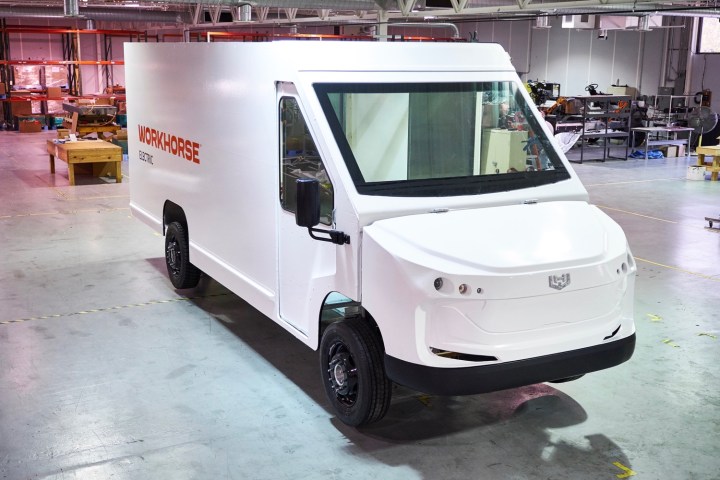 Some companies focus on electric luxury cars, but the vehicles produced by Workhorse Group are a bit more rugged. The Ohio-based company builds electric delivery vehicles, and claims its latest model can compete on equal terms with traditional diesel trucks.
Some companies focus on electric luxury cars, but the vehicles produced by Workhorse Group are a bit more rugged. The Ohio-based company builds electric delivery vehicles, and claims its latest model can compete on equal terms with traditional diesel trucks.
The NGEN-1000 is a light delivery van that Workhorse claims will be priced on par with conventional diesel models. Electric vehicles often come with a price premium over internal-combustion models, so this could be a major coup for Workhorse. Electric vehicles cost less to operate than gasoline or diesel vehicles, but a higher initial purchase price can turn off potential buyers.
Workhorse said it was able to reduce the cost of the NGEN-1000 by making the battery pack smaller. Range is estimated at 100 miles per charge, which should be adequate given that most delivery vehicles never stray far from their home bases. While the company has deployed electric delivery vans before, the NGEN-1000 is the first production model built itst a new Midwest factory.
Thanks to the smaller battery pack and a composite body, the NGEN-1000’s curb weight is 4,000 pounds, according to Workhorse. That’s about the same as a medium-sized passenger car, and Workhorse claims it’s less than half the weight of a traditional diesel step van. That is significant, given that heavy battery packs typically make electric vehicles heftier than their internal-combustion counterparts. Workhorse also claims its van will have a similar amount of storage space to diesel vans. The NGEN-1000 will be available in 250-, 450-, 700-, and 1,000-cubic-foot configurations, with a carrying capacity of up to 6,000 pounds.
The NGEN-1000 is all-wheel drive, with hub-mounted front motors that enable a tighter turning circle, according to Workhorse. A low floor makes loading and unloading easier, the company claims.
Workhorse does a lot more than make electric delivery vans. The company is also developing a pickup truck called the W-15, and the SureFly, a small helicopter that is currently undergoing testing. The W-15 is expected to enter production in 2019, while Federal Aviation Administration (FAA) certification of the SureFly is expected to take at least two years. In May 2018, the company also began a drone-delivery pilot program in Ohio.


